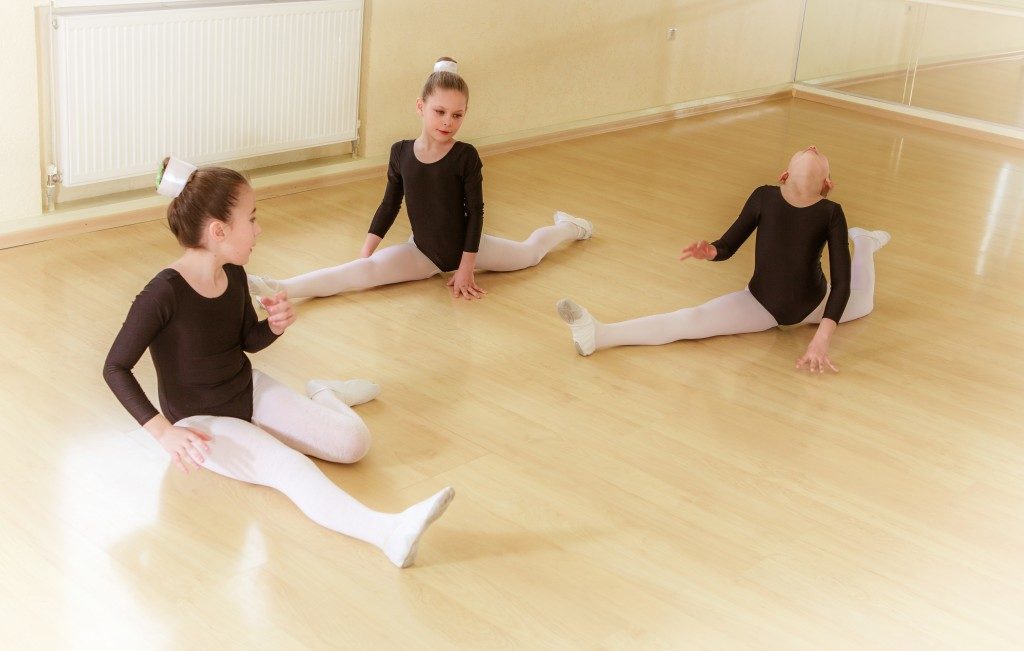You may think that your kids are too young to join a dance class. However, as long as you find an age-appropriate dance class for your kids, they will benefit from it in ways you cannot imagine. Dance is a preverbal activity or form of art, which means that we do it even before we begin to learn to speak. Take a look at your kids. Do they know how to dance but can’t say “mommy” or “daddy” yet? That’s because dancing is the most primal relationship that we have with the universe and ourselves. We first learn to express ourselves by dancing.
If you are looking for a dance studio in Phoenix, Arizona that offers dance classes for kids, you’re in luck because there are plenty of them. They offer dance classes to as young as two-year-olds. As long as your kids know how to move their bodies, they can learn and benefit from taking lessons from professional dance instructors.
Physical Development
Dancing is also an excellent form of exercise. It uses the entire body to accomplish patterns of movements. For kids, this is a great way to show them the range of their motion, coordination, strength, flexibility, and endurance. Through dancing, they learn about what their bodies can achieve through movement.
Like swimming, children can learn to dance at any age. Although young children are naturally active—they move around the house and drive you crazy—dancing allows them to focus on how to improve their physical faculties.
Social Skills
You will notice that kids who are enrolled in dance classes are more social than those who are not. In a dance class, they need to interact with their classmates and instructors. Unlike a school setting where they need to learn the alphabet and numbers, a dance class is more fun to be in for them. Their brains recognize dancing as playing. In a dance class, kids learn about the importance of leadership and teamwork to reach a common goal. They connect with other kids and learn about the value of listening and sharing.
Emotional Maturity

Dancing is also beneficial to one’s psychological health and maturity. Kids become more aware of their emotions and learn to express them through movements. They have improved self-esteem, and they also become more confident. It takes a lot of confidence for them to be able to perform before a huge audience. Dancing also fosters a positive attitude as kids learn about losing gracefully (if it’s a dance contest) and the value of winning magnanimously.
Behavioral Improvement
Kids who have a problem with hyperactivity will benefit from a dance class. Parents whose children have behavioral issues know that dancing helps their kids become more focused, disciplined, and coordinated. It tends to have a calming effect on children and helps them release their pent-up energy.
Educational Benefits
Dancing sparks creativity in children. They develop a love and appreciation for the arts. According to an article on Livestrong, children who participate in dance lessons participate more actively in academic lessons. They also perform better than children who don’t attend a dance class. They tend to have higher SAT scores and performing better in science and math.
The benefits of dance classes for children vary from one child to another. The resounding evidence is that dance improves their behavior and prepares them for a life in academia. After all, good social skills, enhanced memory, and the right behavior are all tenets of a successful life in a big school.
How To Show Your Support as a Parent
Dancing is an excellent way for kids to stay active and have fun. But it’s also important for parents to support their children in dancing. Here are some ways you can do that:
1. Encourage your child to practice at home. Just a few minutes of practice each day can make a big difference in your child’s progress.
2. Help your child choose the right dance class. There are many different types of dance classes available, so it’s important to find one that’s a good fit for your child’s interests and abilities.
3. Attend your child’s recitals and competitions. Showing your support will mean a lot to your child and will help them feel more confident.
4. Be encouraging and positive. dance can be challenging at times, so it’s important to encourage your child and give them lots of praise.
5. Help with costumes and makeup. If your child is performing, you can help them get ready by doing their hair and makeup or helping them with their costume.
6. Be supportive financially. Dance classes and competitions can be costly, so it’s important to be supportive financially if you can.
7. Offer to help with transportation. If your child needs help getting to and from dance class or competitions, offer to drive them or provide transportation.
8. Help with practice space. If your child needs a place to practice at home, see if you can clear some space in your house for them to use.
9. Be understanding of scheduling conflicts. With dance, there will be times when your child has to miss other activities or events in order to attend dance classes or competitions. Try to be understanding and supportive of their commitment to dance.
10. Encourage a healthy lifestyle. A healthy diet and plenty of rest are important for dancers of all ages. Help your child make healthy choices both inside and outside the studio.
Dancing is an excellent way for kids to stay active and have fun. But it’s also important for parents to support their children in this endeavor whether it’s a hobby or something that might turn into a profession later on.

